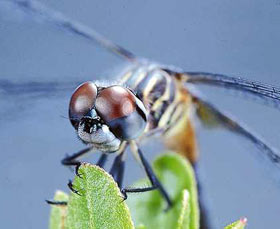Animal Eyes Provide High-Tech Optical Inspiration
Today's cutting-edge optical technologies could progress by leaps and bounds if scientists can better imitate animal-eye evolution spanning billions of years, two bioengineers report.
Using biology as inspiration, scientists hope to make advances in optics that would enhance camera and video technology, surveillance systems, missile defense, remote navigation, and even human vision aids.
"It's amazing to see the beauty of nature and see if we can apply this to everyday life," said Luke Lee, a bioengineer at the University of California, Berkeley.
Lee and Berkeley colleague Robert Szema wrote on the state of animal-eye optics research in a recent issue of the journal Science.
In his lab, Lee is refining three-dimensional polymer structures that can mimic the components of an eye, from lenses to light receptors. He believes soft, flexible polymers may be the key to replicating natural sight systems that outperform their mechanized competition.
"Many, many biologists have studied animals' eyes," Lee said. "Some of those studies are decades old. But they didn't have the tools to make the artificial structures that are now possible.
"[Now is] really a good time to figure out how to make complex three-dimensional structures, like compound eyes."
Flexible Camera Lenses?
Sight works when eyes admit light and focus the rays on some type of detector so that the brain can recognize images. Nature has many ways of accomplishing this goal depending on a critter's needs and habitat.
Humans have camera-type eyes, as do many fish, birds, and reptiles. These eyes use a single lens to focus images onto a light detector called a retina.
The human eye focuses at different distances by using tiny muscles to change the curvature of the eye's flexible crystalline lens. Changing the lens's curvature changes the focal length, so that images at different distances appear in focus.
Other animals use more unusual techniques adapted to their lifestyles.
MOST POPULAR STORIES
Photo in the News: Oldest Known Maya Mural Reveals Royal TaleArchaeologists have revealed the final wall of the earliest known Maya mural, sa... |
Oldest Known Maya Mural, Tomb Reveal Story of Ancient KingArchaeologists have revealed the final wall of the earliest known Maya mural, sa... |
King Kong Island Home Is Pure Fantasy, Ecology Experts SaySkull Island, the mythical home of the great ape King Kong, is supposed to lie i... |
|
||||||||||









